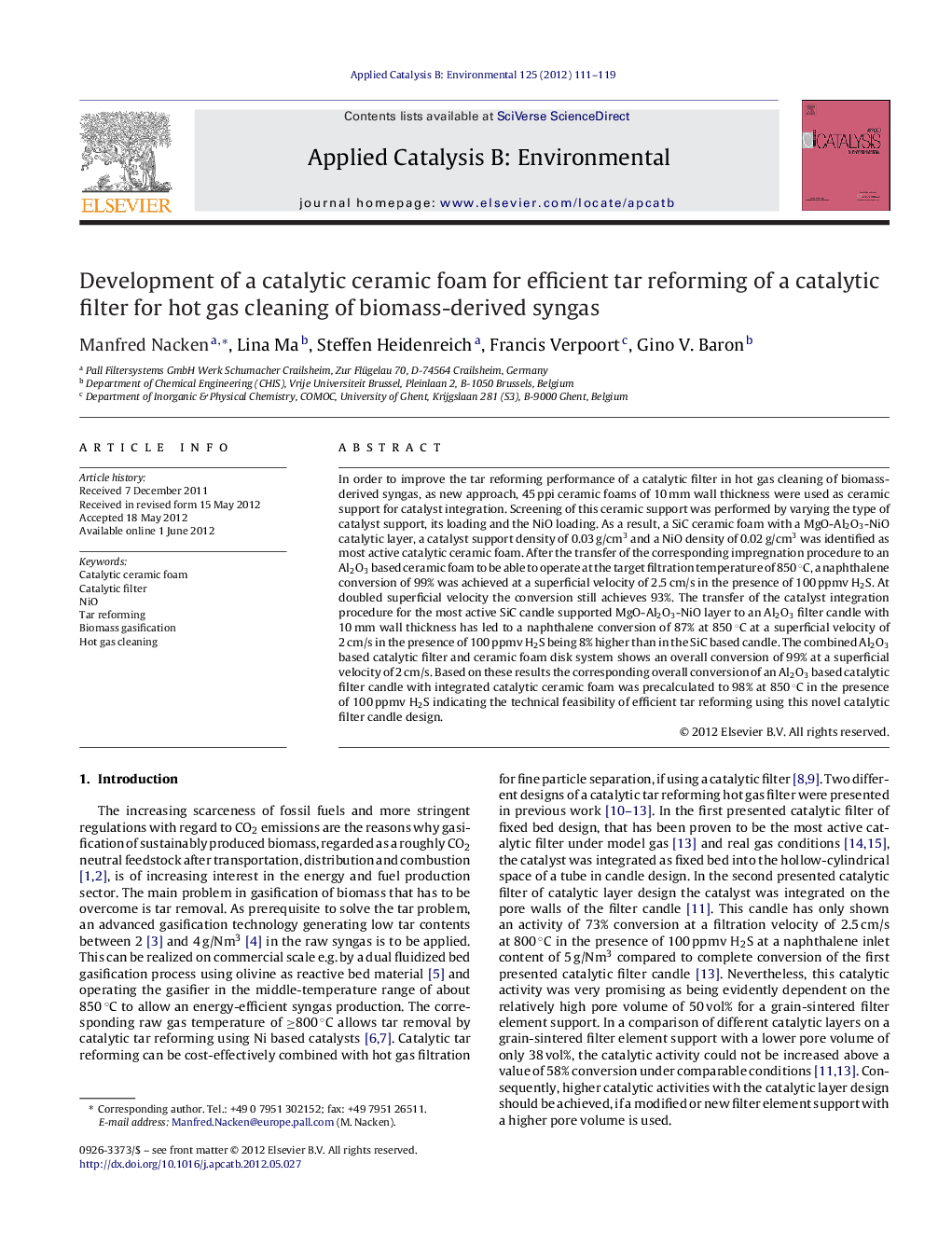| Article ID | Journal | Published Year | Pages | File Type |
|---|---|---|---|---|
| 46061 | Applied Catalysis B: Environmental | 2012 | 9 Pages |
In order to improve the tar reforming performance of a catalytic filter in hot gas cleaning of biomass-derived syngas, as new approach, 45 ppi ceramic foams of 10 mm wall thickness were used as ceramic support for catalyst integration. Screening of this ceramic support was performed by varying the type of catalyst support, its loading and the NiO loading. As a result, a SiC ceramic foam with a MgO-Al2O3-NiO catalytic layer, a catalyst support density of 0.03 g/cm3 and a NiO density of 0.02 g/cm3 was identified as most active catalytic ceramic foam. After the transfer of the corresponding impregnation procedure to an Al2O3 based ceramic foam to be able to operate at the target filtration temperature of 850 °C, a naphthalene conversion of 99% was achieved at a superficial velocity of 2.5 cm/s in the presence of 100 ppmv H2S. At doubled superficial velocity the conversion still achieves 93%. The transfer of the catalyst integration procedure for the most active SiC candle supported MgO-Al2O3-NiO layer to an Al2O3 filter candle with 10 mm wall thickness has led to a naphthalene conversion of 87% at 850 °C at a superficial velocity of 2 cm/s in the presence of 100 ppmv H2S being 8% higher than in the SiC based candle. The combined Al2O3 based catalytic filter and ceramic foam disk system shows an overall conversion of 99% at a superficial velocity of 2 cm/s. Based on these results the corresponding overall conversion of an Al2O3 based catalytic filter candle with integrated catalytic ceramic foam was precalculated to 98% at 850 °C in the presence of 100 ppmv H2S indicating the technical feasibility of efficient tar reforming using this novel catalytic filter candle design.
Graphical abstractFigure optionsDownload full-size imageDownload as PowerPoint slideHighlights► Novel tar reforming catalytic filter with integrated catalytic foam developed. ► A MgO-Al2O3-NiO activated ceramic foam shows complete naphthalene conversion. ► In the presence of H2S the catalytic filter achieves 98% naphthalene conversion.
